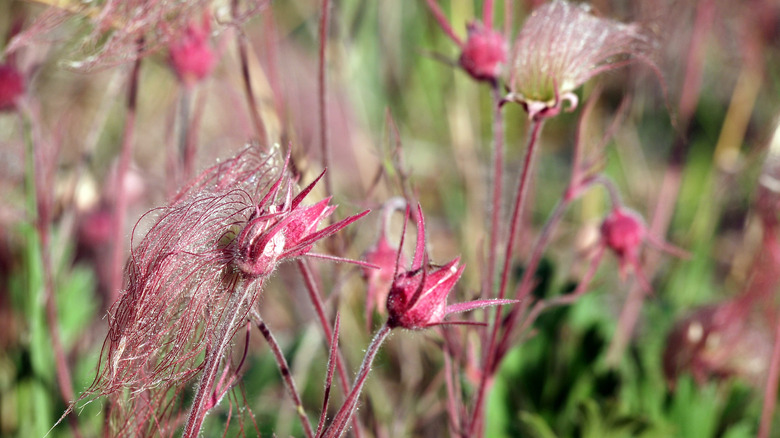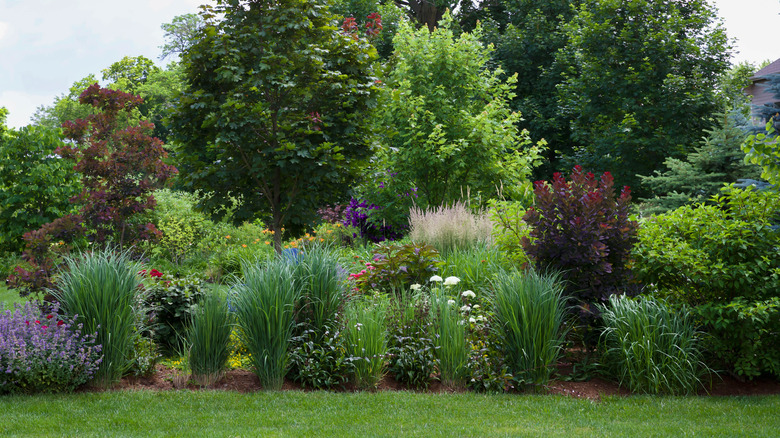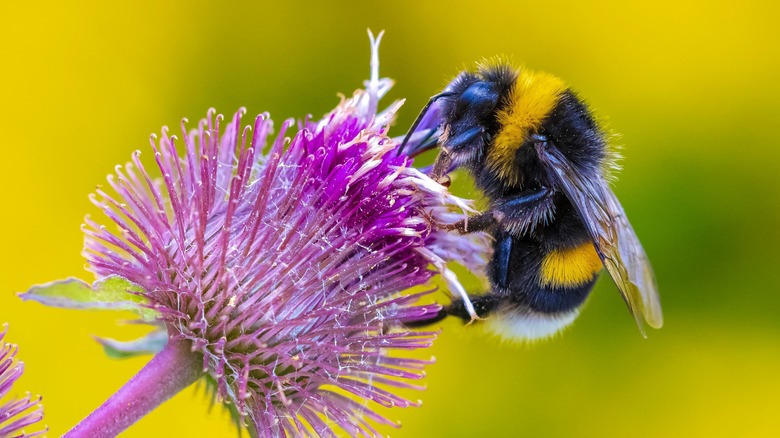Tips For Growing Prairie Smoke Flowers To Bring Pollinators To Your Garden
While many people dream of a garden bursting with color in vibrant shades, not everyone is blessed with green thumbs or the time to care and tend to a large and lively garden. For those still hoping to grow something pretty in their backyards to carry them from spring through to winter, prairie smoke flowers are the low-maintenance, resilient answer to their prayers. Depending on the time of the year you plant them, prairie smoke flowers can do well with very little to no supervision.
These red and white flowers are native to the northern and central U.S. but thrive in warmer and drier conditions such as USDA zones 3 to 7. These flowers are perfect for the less experienced gardener since they require minimal care and supervision. Prairie smoke flowers not only add interesting shades and texture to your garden, but they can attract pollinators like native bees and other helpful insects.
Planting prairie smoke flowers in your garden
Prairie smoke flowers prefer moist (but not soggy) soil in the spring or during their earlier life. As the seasons change from spring to summer, these flowers may need less supervision, although it would be wise to check if they need water from time to time when they are younger. Winter poses a slight risk to these powerful puffy flowers as the soil may retain more moisture which puts your plants at risk of root rot.
A great tip would be to make sure your garden has sufficient drainage during those winter months to keep your flowers' roots in tip top shape. Prairie smoke flowers need space and a lot of sunlight to grow. They can grow between average heights of 6 to 12 inches tall, or up to 24 inches for taller plants. It would be wise to plant your flowers in front of taller plants in order to allow them to get the 6 hours of sun they need daily.
Benefits of growing prairie smoke flowers
Prairie smoke flowers are great for gardeners who want to add interesting color and texture to their garden. Their ability to survive through droughts and other harsh conditions makes them ideal. While the flowers are known to attract pollinators like butterflies and bees, deer and other pests tend to stay away from them. They are less susceptible to diseases and fungal issues that other plants may be prone to.
Prairie smoke flowers can also be good for companion planting with other flowers such as blazing star, black-eyed Susans, or even butterfly weed if you want to add a pop of color. The prairie smoke flowers only get better with time, changing to darker reddish hues as they grow and the seasons progress, even adopting a more purple color in the fall. They are the fuss-free solution many beginner gardeners are looking for since they don't need pruning or deadheading. Once established, they can continue to grow on their own for years afterward.


